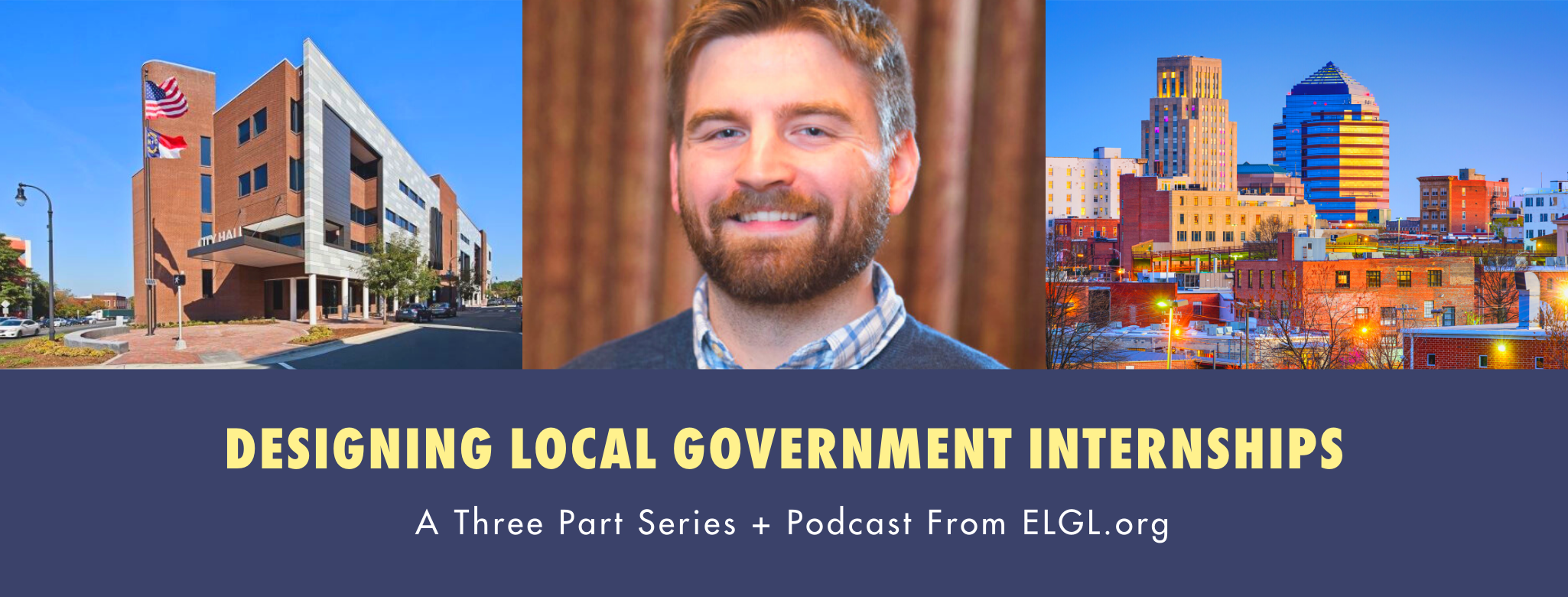
This is the first in a three part series about designing successful local government internships. This series is authored by Pat Madej (LinkedIn | Twitter), and is presented in conjunction with his recent GovLove podcast episode on local government internships.
Step 1: Plan and Pitch
Back when ELGL’s own Ben Kittelson and I created our office’s summer internship program, the first step was to put the work in up front to justify why it was a good idea when we pitched it to our leadership. A good pitch should include coming up with a well thought out work plan with tasks and meaningful experiences that:
- Are realistic and achievable in the timeframe you have;
- Help provide a window into how your local government (or other organization) realistically operates;
- Most importantly, provide value both to the intern and the organization.
It probably isn’t realistic that every project you build into your internship will hit all three, nor will every task be exciting, but a good mix of the above will help make the experience a win for everyone.
With the advent of COVID-19, a good plan and justification for our program became even more crucial, and we essentially needed to re-tool and re-pitch our entire vision for the summer. Luckily, some of the projects we had planned translated pretty well to a virtual format. For those that didn’t, it meant we were back to the drawing board, brainstorming new ideas and reaching out to anyone who we thought could use a hand in these changing times.
Step 2: Hire and Onboard
As with any hiring process, you’ll want to consider both your organization’s and the candidate’s wants and needs. For our last two internships, we partnered with the UNC-Chapel Hill MPA program which has a 400-hour professional work experience as a degree requirement. Because of this, we needed to balance our needs of finding a candidate who could complete the work we needed in a budget office’s fast paced, high-pressure environment with making sure they got the meaningful experiences needed to round out their education.
When it comes to onboarding, I think it’s incredibly important to pull an intern into the team as you would with any other employee. This means introducing them to your office, involving them in team meetings, and keeping them in the loop with what’s going on.
In our virtual environment we learned that it’s not as easy as just walking down the hall and popping into everyone’s office on the first day. As a supervisor in these times, it’s more important than ever to be intentional and active when it comes to integrating a new arrival.
Step 3: Let it Roll and Learn Some Lessons
After reflecting on my own experiences as an intern back in the day as well as a couple of summers running my own internship program, I’ve got a few thoughts on what you can do to help facilitate a successful internship (particularly in our new virtual environment):
- Take the time to be a mentor and resource. While we wanted to give our interns enough room to work independently and make their projects their own, it is important not to leave them hanging when they run into roadblocks or have ideas. From the first day, we make sure to convey that our doors are always open. On top of impromptu meetings, formal check-ins every so often allowed us to make sure everything was going okay and to provide additional context behind meetings. One big value of a good internship is learning what you can’t read in a book, and a lot of that can come from both absorbing experiences and reflecting on them with those in the organization who have been around a while. While these days it may not be as easy as popping around the corner down the hall, creating an environment where quick virtual conversations and meetings are normalized helps a lot.
- Show your intern how their work contributes to a larger mission or tangible product. Not every project will end with a clear, exciting deliverable, so when possible, it can be helpful to explain the “why” behind a task. If it’s data entry, you can take the time to show where the information is going and how it’s planned to be used down the road. If it’s formatting org charts or tables for a budget document, you can help explain why it’s important for your office to deliver clear and concise information to residents. Creating new datasets and conducting more advanced analysis? You can explain the context of why the work came up in the first place and why it’s important to your organization.
- Do your best to create a win for everyone. As mentioned early on in this post, I think that a successful internship experience should be a win for everyone when possible. In our case, our organization has benefited two years in a row by having bright and passionate MPA students give us a fresh outlook on important work we were doing, and our interns benefitted by gaining real-world experiences and fulfilling their degree requirements. While this year we had to pivot quickly because of the circumstances COVID brought us, we learned that with some flexibility and creativity, it’s still possible to create a great experience for everyone involved.
Pat Madej is a Senior Budget & Management Analyst at the City of Durham. You can find him on Twitter at @PatMadej.
